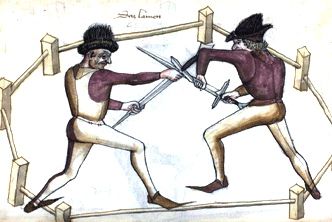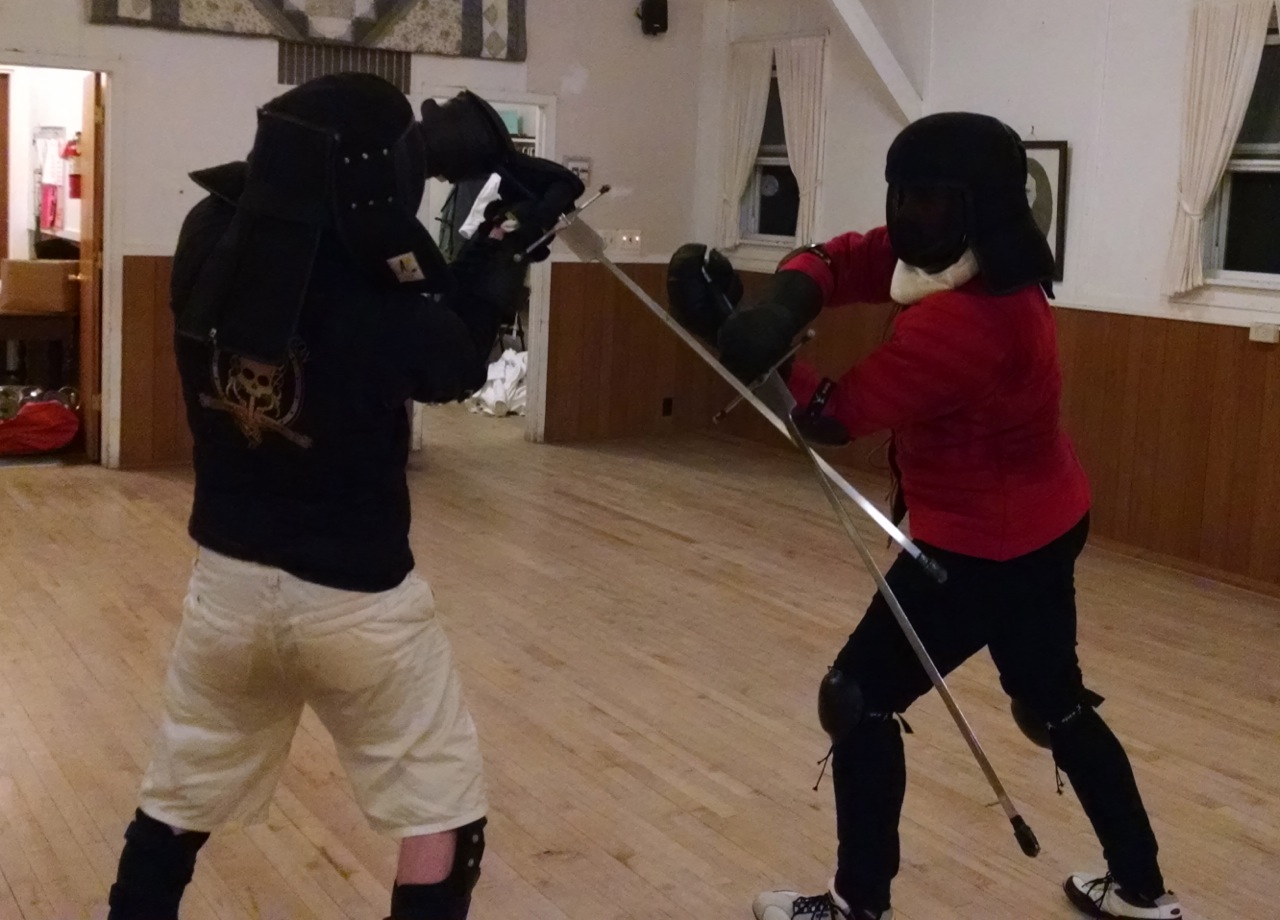Longsword (circa 14th-16th Century)

Description
The longsword is one of the most iconic weapons in history, seen throughout paintings, movies, and games. These blades are far more agile than movies lead one to believe, weighing at most 2.5 lbs. Blade lengths and sword handles varied throughout time, regions, and history, but all had handles meant to accommodate two hands.
The club is deeply rooted in Kunst Des Fechtens, the German tradition taught by masters like Johannes Liechtenauer and Joachim Meyer. However, we have several sources for Italian and other traditions. For many, the longsword is their first exposure to Historical European Martial Arts. It serves as a great point to learn basic body mechanics integral to fencing and sparing. Our equipment requirements depend on the sparing intensity and the type of longsword in use. Foam boffers are often considered "T-shirt" fencing and imply light clothing and a mask. Beyond that, synthetic and steel sparing will require a jacket, heavy gloves, and knee and elbow guards, especially for those working toward tournament-level sparing. .

Fighting with a longsword contains a breadth of possibilities and styles of attacks. The German tradition focuses on the Drie Wunder, the 3 ways to injure your opponent, which include strikes, stabs, and thrusts. Behind these offensive actions is a beautiful game of blade work, line control, and movement to execute attacks that keep you safe.
However, the longsword treaties are not limited to just these attacks; many manuals include instructions for grappling and wrestling. These are invaluable skills for when you get in close and lose your advantage of distance.

In a sparing context, we simulate Bloßfechten, which assumes both combatants are unarmored knaves accosting each other. Tournaments take this an additional step by attributing values to strikes and body regions to score points while punishing combatants for simultaneous hits.
Period sources
Period sources include works by Liechtenauer, Meyer, Talhoffer and Fiore.